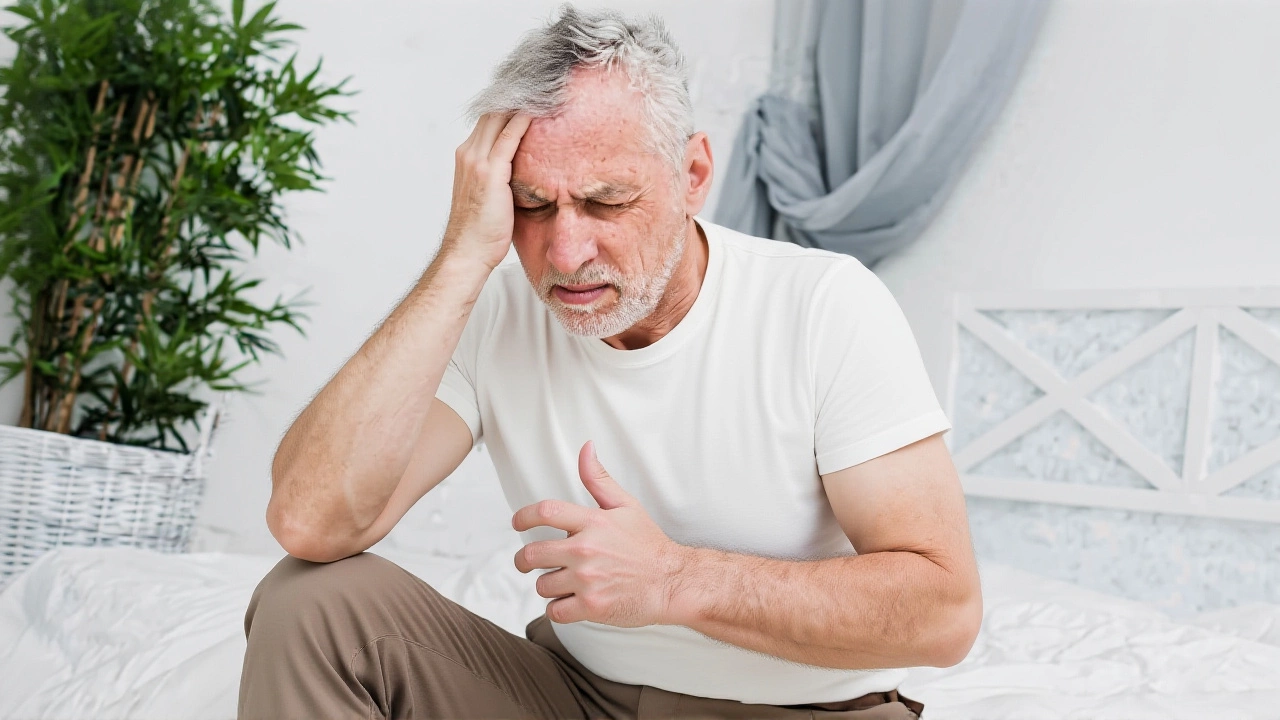On November 19, 2025, International Men's Day turned a quiet medical observation into a global conversation: andropause isn’t myth—it’s a measurable, growing health crisis hiding in plain sight. For millions of men over 50, the slow erosion of testosterone isn’t just about losing muscle or libido. It’s about forgetting where they put their keys, snapping at their kids, or losing interest in everything they once loved. And too often, they blame stress—or aging—instead of seeing it for what it is: a biological shift with real consequences.
What Andropause Really Looks Like
It doesn’t come with a bang. Unlike female menopause, where hormones drop sharply, Dr. Alok Kumar Jha, Senior Consultant – Urology at Yatharth Super Speciality Hospital in Faridabad, explains it like this: "It’s a drip, not a flood. Testosterone declines about 1% a year after 35. You don’t notice until you’re running out of gas—and you don’t know why." The European Male Ageing Study (EMAS), published in the Journal of Clinical Endocrinology and Metabolism, confirms this: nearly 30% of men over 50 show clinically low testosterone levels, according to data from the New England Journal of Medicine.
It’s not just energy. Men report brain fog—struggling to focus at work, forgetting names, losing motivation for hobbies. Some wake up exhausted, even after eight hours of sleep. Others notice their moods shifting: irritability, anxiety, even depression. "These aren’t personality changes," says Dr. Jha. "They’re neurochemical. Testosterone affects serotonin and dopamine pathways. When it drops, so does your sense of well-being."
Why Men Stay Silent—And Why That’s Dangerous
Most men don’t go to the doctor. They chalk it up to "getting older." But Dr. Shobana Priya S., Senior Consultant at SIMS Hospital in Chennai, warns this silence is deadly. "We see men with undiagnosed diabetes, early heart disease, and severe depression—all linked to untreated low testosterone. In India, where metabolic syndrome affects over 30% of adults, this isn’t just about mood. It’s about survival."
The body’s chemistry turns against itself. As visceral fat increases, so does aromatase—an enzyme that converts testosterone into estrogen. Higher estrogen levels further suppress testosterone production. Meanwhile, sex hormone-binding globulin (SHBG) rises with age, locking up what little testosterone remains. "It’s a perfect storm," says Dr. Jha. "Fat doesn’t just sit there. It actively sabotages your hormones."
Obesity, Sleep, and the Vicious Cycle
Dr. Amin, cited by Business Standard, paints a chilling picture: "Excess belly fat raises scrotal temperature. That damages Leydig cells—the very cells that make testosterone. Less testosterone means more fat. More fat means even less testosterone. It’s a loop with no exit unless you break it."
And it’s not just diet. Poor sleep is a silent killer. Testosterone peaks in the early morning—around 8 a.m.—and drops steadily through the day. That’s why blood tests must be done before 10 a.m. But if you’re tossing and turning, your body never gets that daily surge. "Men who sleep less than six hours have 15-20% lower testosterone on average," Dr. Amin adds. "It’s not coincidence. It’s cause and effect."

A Global Movement for Male Wellness
Meanwhile, in Jamaica, Dr. Charmaine Thomas is leading the charge. "We talk about women’s menopause like it’s normal. But when a man says he’s tired all the time, we tell him to lift heavier weights," she says. "It’s time we stop treating male midlife changes as weakness. They’re biology."
Dr. Thomas is pushing for andropause to be included in Jamaica’s national health education during International Men's Month—a move that could reshape how Caribbean nations approach male health. "If we want gender-balanced wellness," she says, "we can’t ignore half the population’s aging process."
What Works—And What Doesn’t
Testosterone replacement therapy? Not a magic bullet. "Age alone is never a reason to start it," Dr. Amin stresses. "You need lab tests, cardiovascular screening, prostate checks. Some men get worse with TRT."
Instead, the evidence points to lifestyle. The Journal of Urology found that men who lifted weights three times a week, slept seven hours, and kept body fat under 20% maintained near-young adult testosterone levels into their 60s. Walking 10,000 steps daily? That’s a free, daily hormone booster. Reducing alcohol? Even one drink a night can lower testosterone by 7%.
"You don’t need a pill," says Dr. Jha. "You need awareness. You need to check your numbers. And you need to talk to someone—your doctor, your partner, your brother. This isn’t about weakness. It’s about taking back control."

Historical Roots of a Quiet Revolution
International Men’s Day began in 1992, conceived by Missouri professor Professor Thomas Oaster as a day of "respect for all men." Back then, it was about fatherhood and male role models. Today, it’s becoming about biology. The shift is subtle—but powerful. Men are no longer just expected to be strong. They’re being asked to be seen.
Frequently Asked Questions
Is andropause the same as female menopause?
No. Female menopause involves a sharp drop in estrogen over months, often with clear symptoms like hot flashes. Andropause is a slow, decade-long decline in testosterone—sometimes as little as 1% per year. Symptoms are subtler: fatigue, mood shifts, brain fog. Many men don’t realize it’s happening until it’s advanced.
Can lifestyle changes really reverse low testosterone?
Yes—significantly. Studies show men who lose 10% of body weight can increase testosterone by 15-20%. Strength training boosts it acutely, and consistent sleep raises baseline levels. One 2023 trial found that men who combined weight loss, daily walking, and 7+ hours of sleep reversed low testosterone in 68% of cases over 12 months—without medication.
Why are men less likely to seek help for andropause?
Cultural stigma plays a huge role. Many men fear being seen as weak or "not masculine" if they admit to low energy or mood changes. There’s also a lack of awareness—most doctors don’t screen for testosterone unless a patient specifically asks. And unlike women’s health, male midlife issues rarely make public health campaigns.
What tests should a man ask for if he suspects andropause?
A morning blood test for total testosterone, free testosterone, SHBG, and estradiol. Also check fasting glucose, HbA1c, and lipid profile—low testosterone often coexists with metabolic syndrome. A prostate-specific antigen (PSA) test is essential before considering any hormone therapy. Don’t rely on symptoms alone; labs tell the real story.
Is testosterone therapy safe for older men?
It can be—but only after thorough evaluation. Men with untreated prostate cancer, severe heart failure, or sleep apnea should avoid it. For others, under medical supervision, it can improve energy and mood. But it’s not a quick fix: it requires ongoing monitoring, and lifestyle changes still matter. Many men feel better on TRT, but only if they’re also eating well and moving daily.
How common is andropause in developing countries like India?
It’s underdiagnosed but likely widespread. With rising obesity rates—over 40% of urban Indian men over 45 have metabolic syndrome—and poor access to routine screening, many cases go unnoticed. Dr. Priya notes that in her clinic, 1 in 3 men over 50 with fatigue or depression tested low for testosterone. The real number could be higher, especially in rural areas with limited healthcare.
